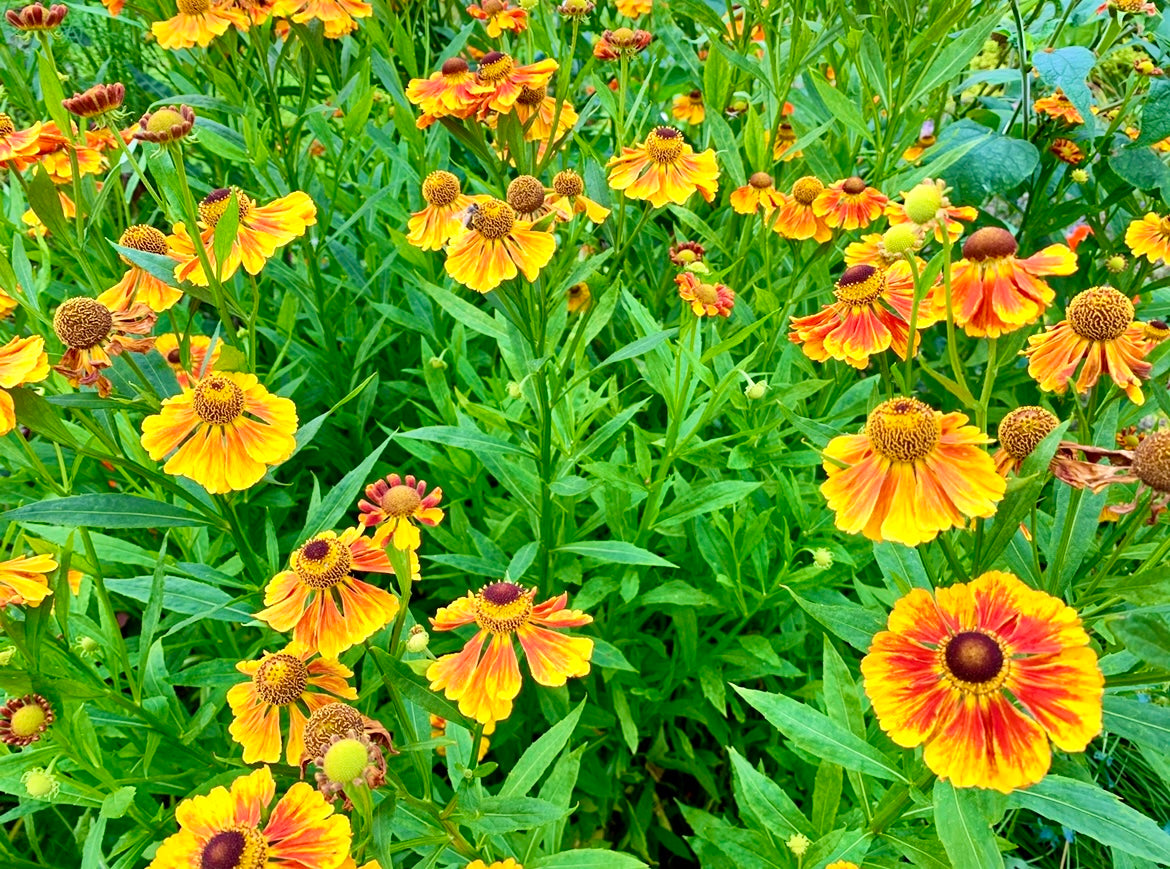Recipe for late colour

Over the years we’ve perfected the planting at Genus HQ to give us interest throughout most of the year. Mid to late August can be a tough time to keep the colour coming and, after the exuberance of May and June, there’s often a distinct hiatus, as all the successes of the earlier months start to deteriorate making the garden look tired and neglected. We’ve found that by bravely cutting back to the ground plants that have done their bit, although temporarily leaving a gap in the border, soon gives us a perfect mound of fresh foliage and quite often a second flush of flowers to enjoy.
In August the later performing perennials are at their peak and it is now that we benefit from the colour and structure they can give. Our dahlias are paying us back amply with their exuberant flowering and will continue right up until the first frosts. Sun flowers grown from a single seed in April now carry their towering heads proudly over their neighbours while nearby Tithonia - the Mexican sunflower - in bright orange or yellow are like beacons to butterflies and bees.
Other great performers in August are Helenium (pictured), anemones and Cosmos, and with judicious deadheading many of the roses are blooming once again. With the garden freshened up at last by this week's rain we’re hoping the colours will stay with us well into autumn.











